Halong Bay is a UNESCO World Heritage site located in the Gulf of Tonkin in northeast Vietnam. The bay is famous for its emerald waters, towering limestone pillars, and picturesque islands, but what many visitors may not know is that the area is also home to a network of magnificent caves. Each cave is unique in its own way and offers visitors a glimpse into the geological history of the region.

Halong Bay and its Caves
Halong Bay is a natural wonder that attracts millions of visitors every year. The bay covers an area of approximately 1,500 square kilometers and is home to over 1,600 limestone islands and islets.
The islands are made of limestone, which is a sedimentary rock that was formed millions of years ago when the area was covered by the sea.

Over time, the water receded, and the limestone pillars were exposed to the elements. Rain, wind, and waves eroded the rock, creating a network of caves and grottoes.
The caves are a testament to the power of nature and offer visitors a glimpse into the geological history of the region.
The Geological Formation of Halong Bay Caves
The geological formation of Halong Bay Caves is a fascinating topic that has intrigued scientists for years. The caves were formed over millions of years by the action of water and wind on the limestone rock. The limestone in the area is mainly composed of calcium carbonate, which is soluble in water.
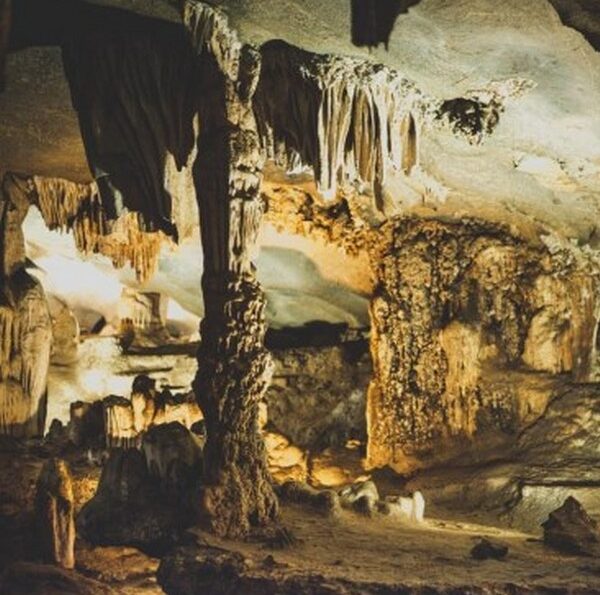
When rainwater or seawater seeps into the limestone, it dissolves the rock and creates cavities. Over time, these cavities grow larger, and the water erodes the rock, creating magnificent caves and grottoes. The process is slow, but the result is breathtaking.
Sung Sot Cave: The Astonishing Surprise
- Location on map: https://maps.app.goo.gl/DHfznE33YtFRceSu5
- Route: Halong Bay center area
Sung Sot Cave, also known as Surprise Cave, is one of the most popular caves in Halong Bay. The cave is located on Bo Hon Island and was discovered in 1901 by the French. The cave is accessible by foot and requires visitors to climb a steep set of stairs.
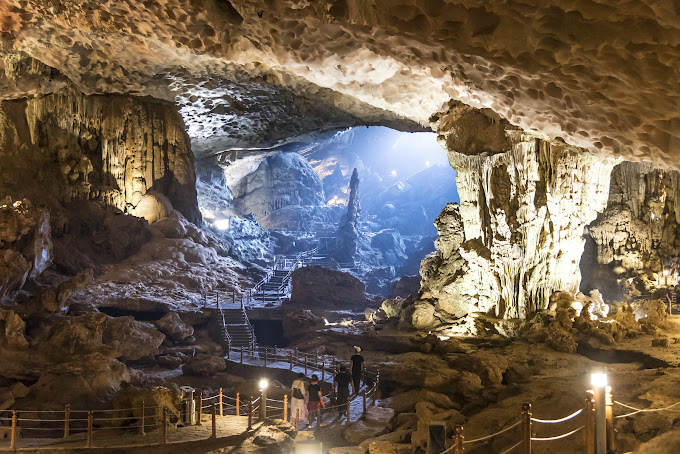
Once inside, visitors are treated to an astonishing display of stalactites and stalagmites. The cave is divided into two chambers, with the first chamber being the largest. The chamber is over 30 meters high, and the walls are adorned with intricate rock formations.
The second chamber is smaller but equally impressive. The chamber is home to a unique formation that resembles a giant dinosaur. The cave is a must-see for anyone visiting Halong Bay.
Thien Canh Son Cave: A Hidden Gem
- Location on map: https://maps.app.goo.gl/RZ1CvKNLvCTTwFRL7
- Route: Bai Tu Long Bay
Thien Canh Son Cave is a hidden gem located on Bai Tu Long Bay, a quieter and less crowded part of Halong Bay. The cave is accessible by boat and requires visitors to climb a set of stairs to reach the entrance.
Once inside, visitors are treated to a stunning display of stalactites and stalagmites. The cave is also home to a natural skylight that allows sunlight to filter into the cave, creating a mystical atmosphere.
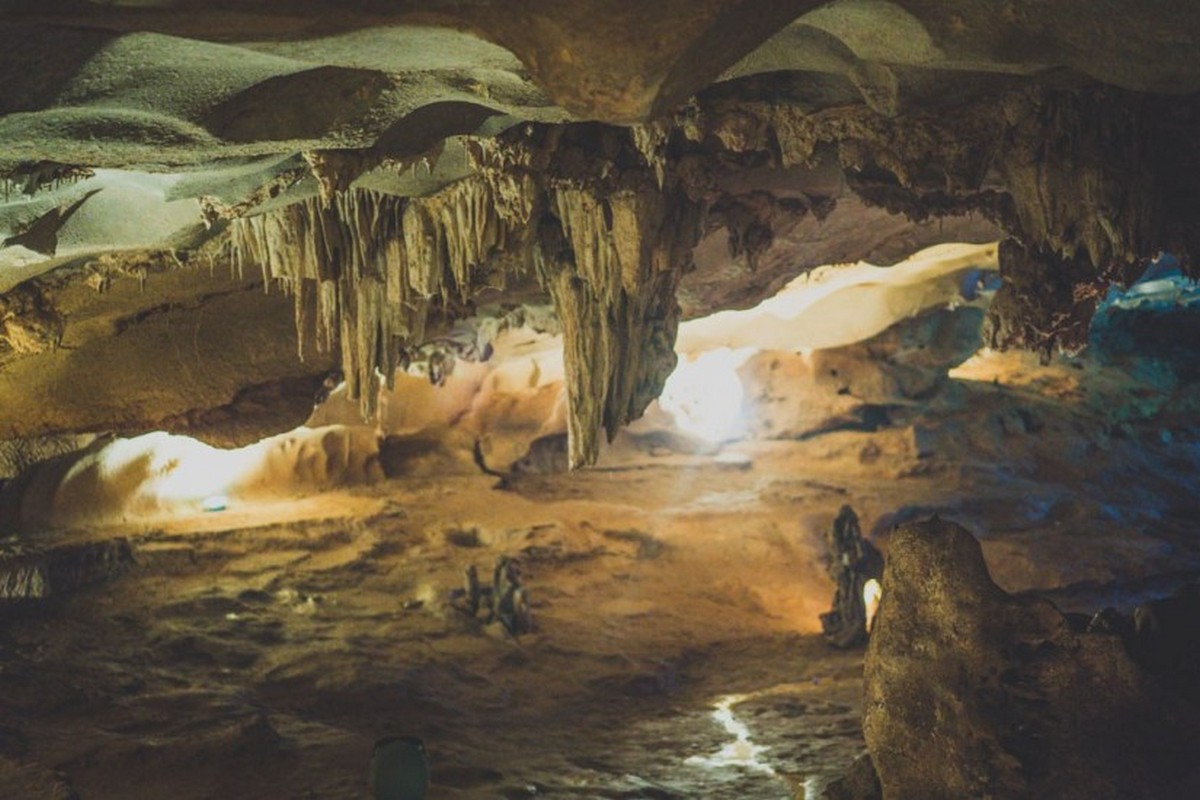
The cave is relatively small, but its beauty is unmatched. The cave is also home to an underground lake, which adds to the overall enchantment of the cave.
Dark and Bright Cave: A Mystical Adventure
- Location on map: https://maps.app.goo.gl/tRWK3Ai7YfSDBVdo9
- Route: Lan Ha Bay
Dark and Bright Cave is a mystical adventure that takes visitors through a network of caves and grottoes. The cave is accessible by boat and requires visitors to paddle through the narrow cave entrance.
Once inside, visitors are treated to a breathtaking display of stalactites and stalagmites. The cave is divided into two chambers, with one chamber being dark and the other chamber being bright.
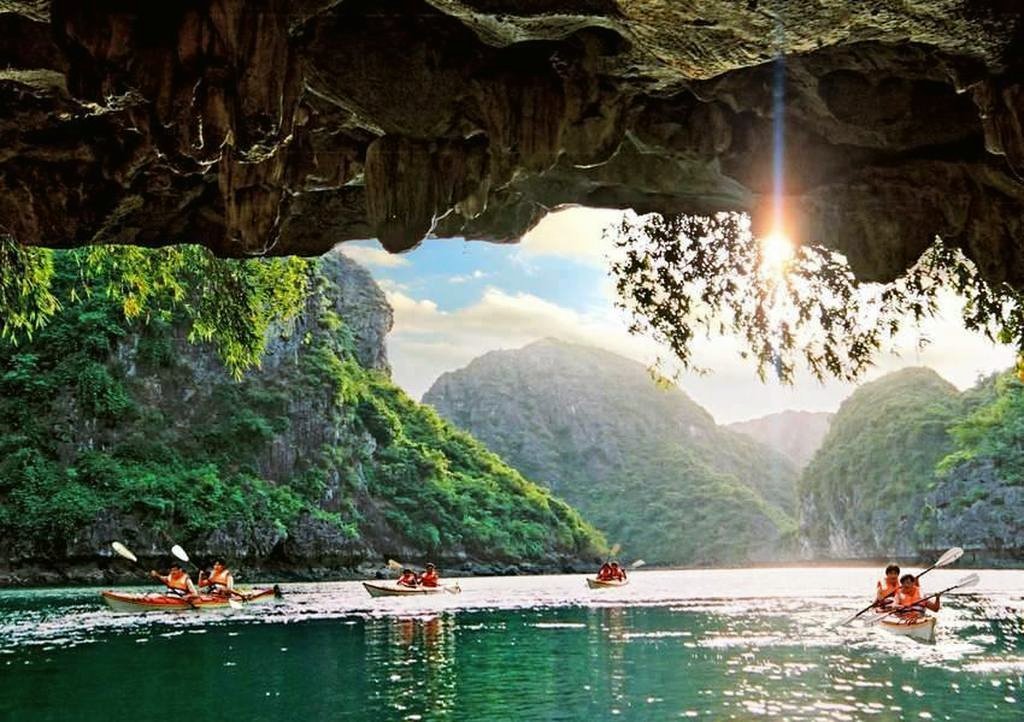
The dark chamber is home to a unique rock formation that resembles a giant jellyfish, while the bright chamber is home to a natural skylight that allows sunlight to filter into the cave. The cave is a must-see for anyone looking for a unique and mystical adventure.
Thien Cung & Dau Go Cave: The Cave of Wonders
- Location on map: https://maps.app.goo.gl/XwPsVbj8aiqXyTfV8
- Route: Ha Long Bay
Thien Cung and Dau Go Cave are two of the most popular caves in Halong Bay. Thien Cung Cave, also known as Heavenly Palace Cave, is located on Dau Go Island and is accessible by boat. The cave is divided into three main chambers, with each chamber being more stunning than the last.
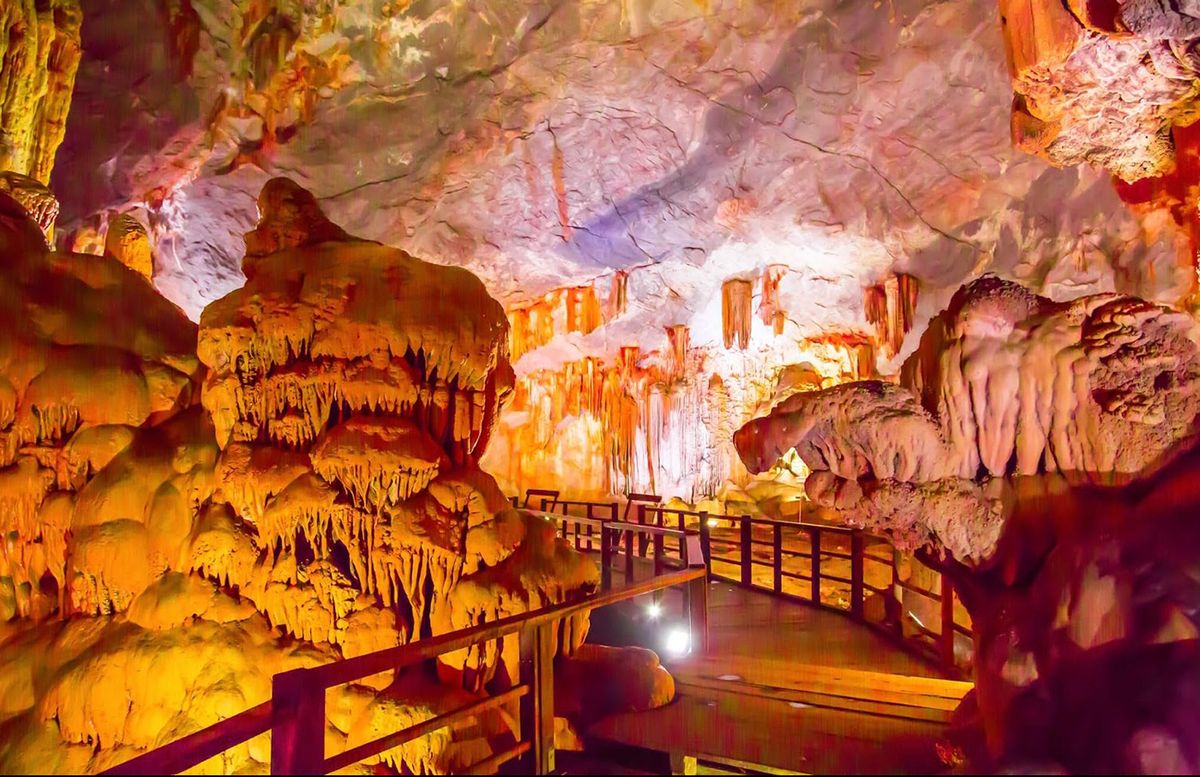
The chambers are home to a variety of stalactites and stalagmites, some of which resemble animals and mythical creatures. The cave is also home to a unique rock formation that resembles a giant dragon.
Dau Go Cave, also known as Wooden Stakes Cave, is located on the same island as Thien Cung Cave and is accessible by foot. The cave is home to a unique rock formation that resembles a giant elephant. The cave is also home to a large chamber that was used by the Vietnamese army during the 13th century to store wooden stakes.
Me Cung Cave
Me Cung Cave, also known as Bewitching Cave, is located on Lom Bo Island and is accessible by boat. The cave is divided into two chambers, with the first chamber being the largest. The chamber is home to a unique rock formation that resembles a frog.
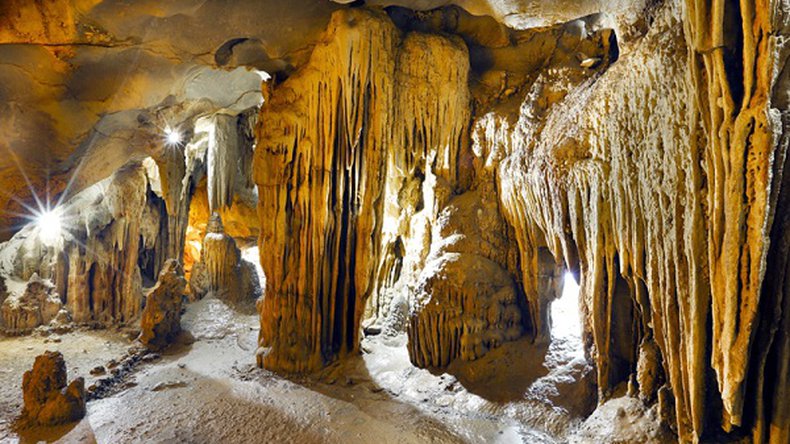
The second chamber is smaller but equally impressive. The chamber is home to a natural skylight that allows sunlight to filter into the cave, creating a mystical atmosphere.
Trinh Nu cave
Trinh Nu Cave, also known as Virgin Cave, is located on Bo Hon Island and is accessible by boat. The cave is named after a tragic love story between a fisherman and a beautiful girl who was turned into stone by a jealous sea monster.
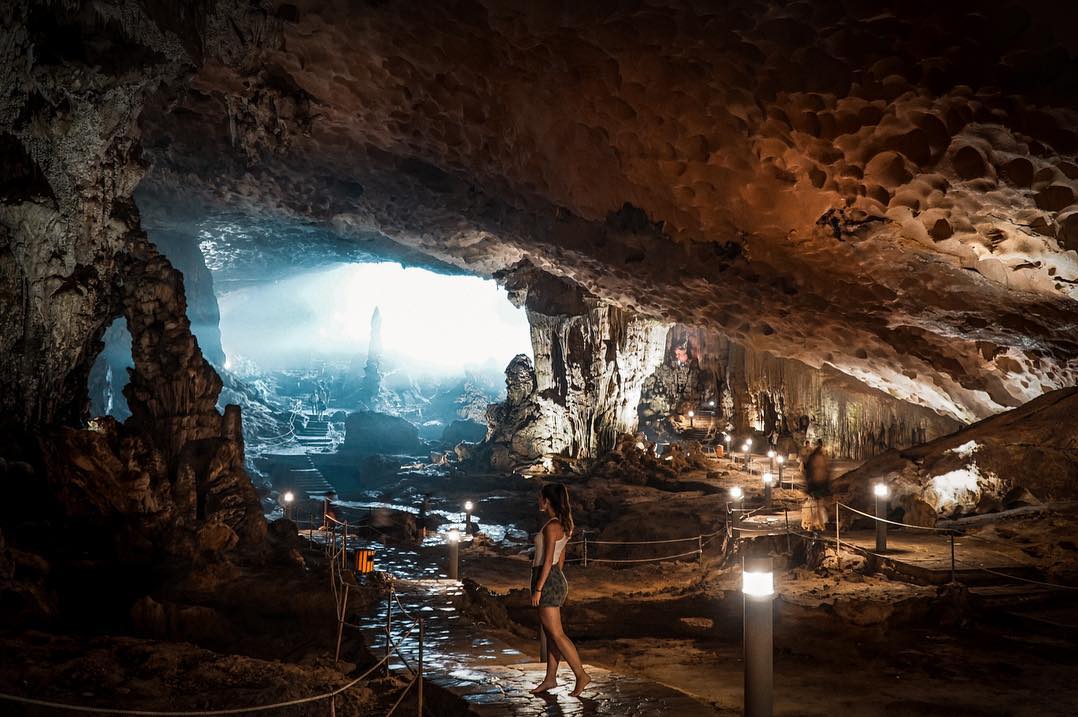
The cave is divided into two chambers, with the first chamber being the largest. The chamber is home to a unique rock formation that resembles a young girl.
The second chamber is smaller but equally impressive. The chamber is home to a natural skylight that allows sunlight to filter into the cave, creating a serene atmosphere.
Tien Ong cave
Tien Ong Cave, also known as Fairy Cave, is located on Cai Tai Island and is accessible by boat. The cave is divided into two chambers, with the first chamber being the largest. The chamber is home to a unique rock formation that resembles a fairy.
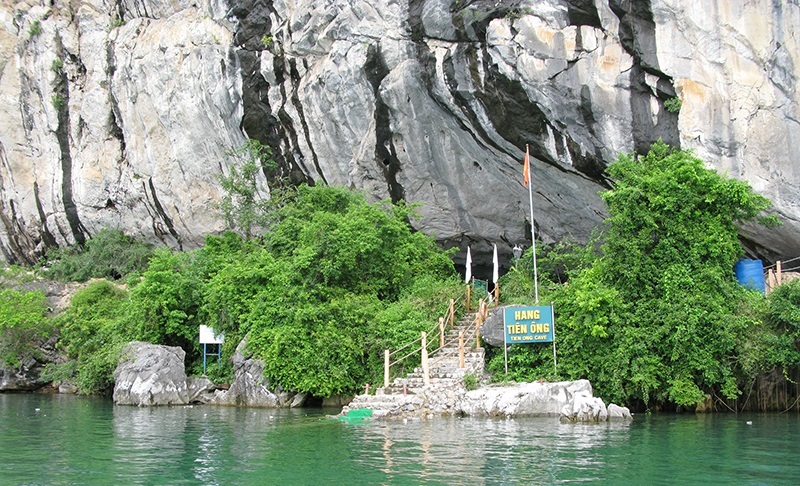
The second chamber is smaller but equally impressive. The chamber is home to a natural skylight that allows sunlight to filter into the cave, creating a magical atmosphere.
Other Caves in Halong Bay
Halong Bay is home to countless caves and grottoes, each with its own unique beauty. Some of the other notable caves in Halong Bay include Luon Cave, Tam Cung Cave, and Bo Nau Cave.
Luon Cave is a small cave that is accessible by boat or kayak. The cave is home to a small lagoon and is surrounded by towering limestone pillars.
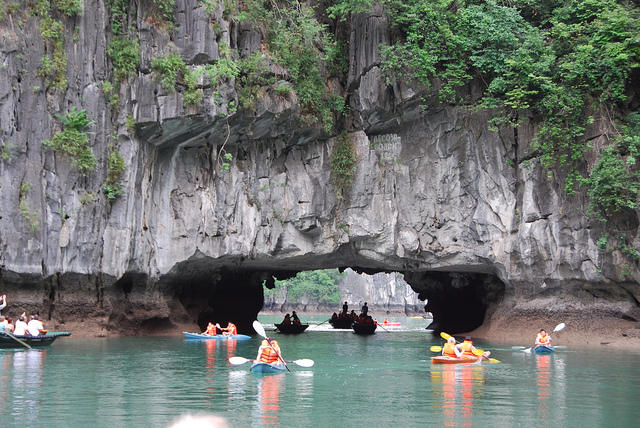
Tam Cung Cave, also known as Three Palace Cave, is located on May Den Island and is accessible by boat. The cave is divided into three chambers, each with its own unique rock formations.
Tours and Cruises to Visit the Halong Bay Caves
The best way to visit the Halong Bay caves is by booking a tour or a cruise. There are countless tour operators in the area that offer a variety of tours and cruises to suit every budget.
Most tours and cruises include a visit to some of the most popular caves, such as Sung Sot Cave and Thien Cung Cave. Some tours and cruises also offer the opportunity to kayak or swim in the bay.

When booking a tour or a cruise, it’s important to do your research and choose a reputable operator. It’s also important to consider the time of year you’re visiting, as the weather can impact your experience.
Indochina Junk is the first cruise operator that brings visitors to explore untouched area in Bai Tu Long Bay, get off the beaten path. In the cruise tour with Indochina Junk, you will visit Thien Canh Son cave and explore the marvelous beauty of nature.

Halong Bay is a natural wonder that is home to a network of stunning caves and grottoes. Each cave is unique in its own way and offers visitors a glimpse into the geological history of the region. Book a tour or a cruise and discover the enchanting beauty of Halong Bay Caves for yourself.

 Français
Français